Uzbekistan, the most populous country in Central Asia with 29 million people, is rich in history. Its native son Amir Timur(1336-1405) established the first empire in the region in 1395. Samarkand, Bukhara and Khiva, key cities of the ancient Silk Road are all World Heritage Sites for their cultural, historical and architectural significance. I had a wonderful time in Uzbekistan as there was no bush camping and I had more time to explore, sample Uzbek dishes and meet local people.
Background
The land of present day Uzbekistan which is found along the upper Amu- Darya (Oxus River), Syr-Darya (Jaxartes River) and their tributaries has always been more settled than the rest of Central Asia. It has been part of the empire under the Achaemenids (Persian), the Roman (4th century BC), the Blue Turks in the 6th century, the Arabs in the 8th century, the Samanids in the 9th and 10th centuries, the Mongols under Genghis Khan in 13th century. Then Amir Timur from Shakhrisabz (80km from Samarkand), rose to power in 1365 and built an empire from Egypt to Kashgar.
The Uzbeks beganto move in around the mid-15th century from present day Kazakhstan and adjacent parts of Russia. This marked the beginning of the Shaybanid dynastry. By the 19th century the entire region was dominated by three weak, feuding Uzbek khanates (city-states) – Khiva, Bukhara and Kokand.
The Russians arrived during the early 18th century. The three Uzbek city-states were annexed into the Russian empire between 1865 and 1875. Following the October Revolution in 1917, the Soviet era in Uzbekistan began when the khanates were forcibly replaced by ‘People’s Republics’ in 1920. In February 1990, Islam Karimov, the First Secretary of the Communist Party of Uzbekistan took up the new post of executive president. In August 1990, Karimov declared Uzbekistan independent and won the presidential elections in December 1991.
Under the constitution, Uzbekistan is a secular, democratic presidential republic. Though the president can only be in office for two consecutive terms, Karimov has been in power since 1991.Democratic development has suffered as a result of corruption, nepotism, wide presidential powers, suppression of dissent and a subdued press. The Islamic Movement of Uzbekistan formed by a group of young, Fergana-based Islamic radicals has declared jihad on the Karimov regime. In February 1999, there was a series of devastating bomb attacks in Tashkent.
Uzbek is the largest ethnic group comprising 80% of the population followed by the Russian (5.5%), Tajiks (5%) and Kazakh (3%). Majority of the population (88%) is Muslim.
Uzbekistan has four World Heritage Sites. They are the Ichon-Qala (old city of Khiva), the historic centre of Bukhara and Shakhrisabz and Samarkand as crossroad of culture.
Day15 (August 9, Sunday): Kazakhstan –Tashkent, Uzbekistan (350km)
The Kulkedash Medressa with a 15th century portal and Juma (Friday) Mosque are close to the bazaar. A guard of Medressa who speaks excellent English told me to go to see the 7th-century Osman Quran in the Moyle Mubarek Library Museum of the Khast Imom complex (the official religious centre of the Republic).
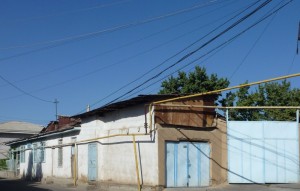 |
I took his advice and walked to the museum through old Tashkent. The enormous 338-page Osman Quran in deerskin is said to be one of the oldest in the world. It was brought to Samarkand by Timur and taken to Moscow in 1868. It was returned to Tashkent by Lenin in 1924 as an act of goodwill towards the Turkestan’s Muslims.
I was tired and tried to look for a taxi. No taxi was in sight. When a young Uzbek couple stopped one, they kindly gave me a lift to the Ghafur Chulom station. They also gave me some grapes to eat! By the time I got back to the hotel, it was 5pm. I was totally exhausted.
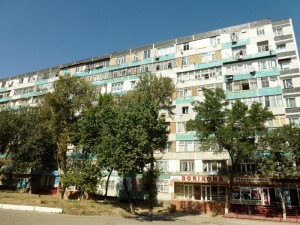 |
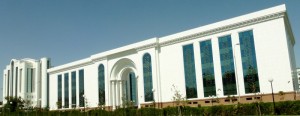 |
In the evening, the whole group had a farewell dinner for Rosa, Darren and Kristy at a nice Italian restaurant. The pasta was excellent but the service was unbearably slow.
Day 17 (August 11): Tashkent – Samarkand (310km)
We arrived at our B&B near the Registan Square around 5pm. Hortensia (my roommate) and I walked to the square at sunset. We heard loud music behind the square and found an open air banquet hall with a wedding reception. We were curious and stood in the crowd to wait for the newly- wed couple to arrive. The bride in her white bridal gown is beautiful. I took some photos and watched the ceremony with amazement. The bride bowed half a dozen times to her husband and then he took off her veil. After having a glass of champagne, they proceeded to a table on the platform with at least 40 tables of guests in the hall.
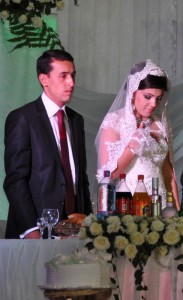 |
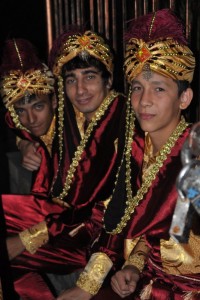 |
After spending an hour there, we left to look for something to eat. We ran into our group and had dinner in a local restaurant. I had a nice laghman (noodles) and a draft beer for 11000som.


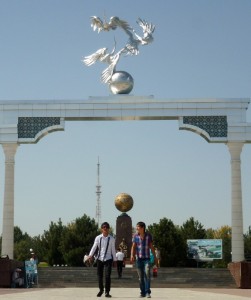
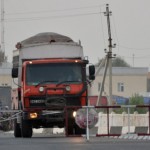

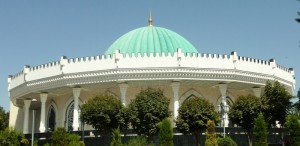
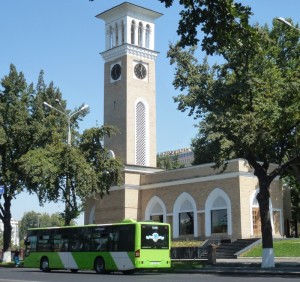
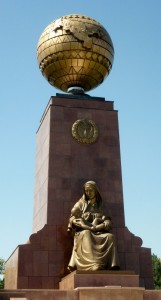
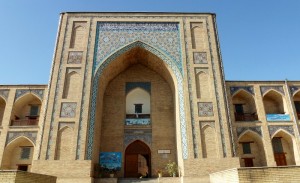
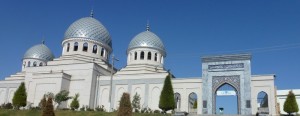
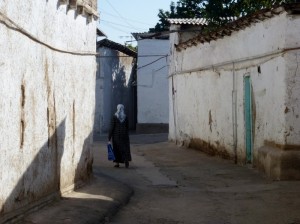
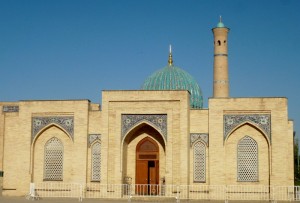
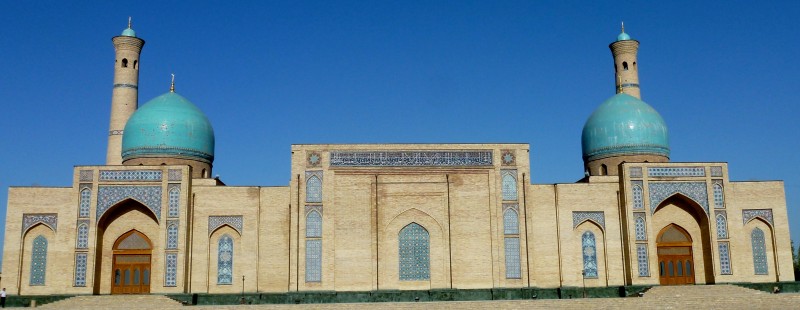
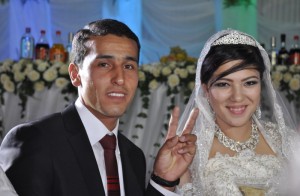
Hey Sarah, how are you doing?
We met on the guesthouse in Samarkand, when you came to have a dinner, do you remember?
We’re Japanese sisters, Teresa and Josephine.
Your HP is very interesting! Love to read 🙂
Hope you have a nice time in Turkey too.